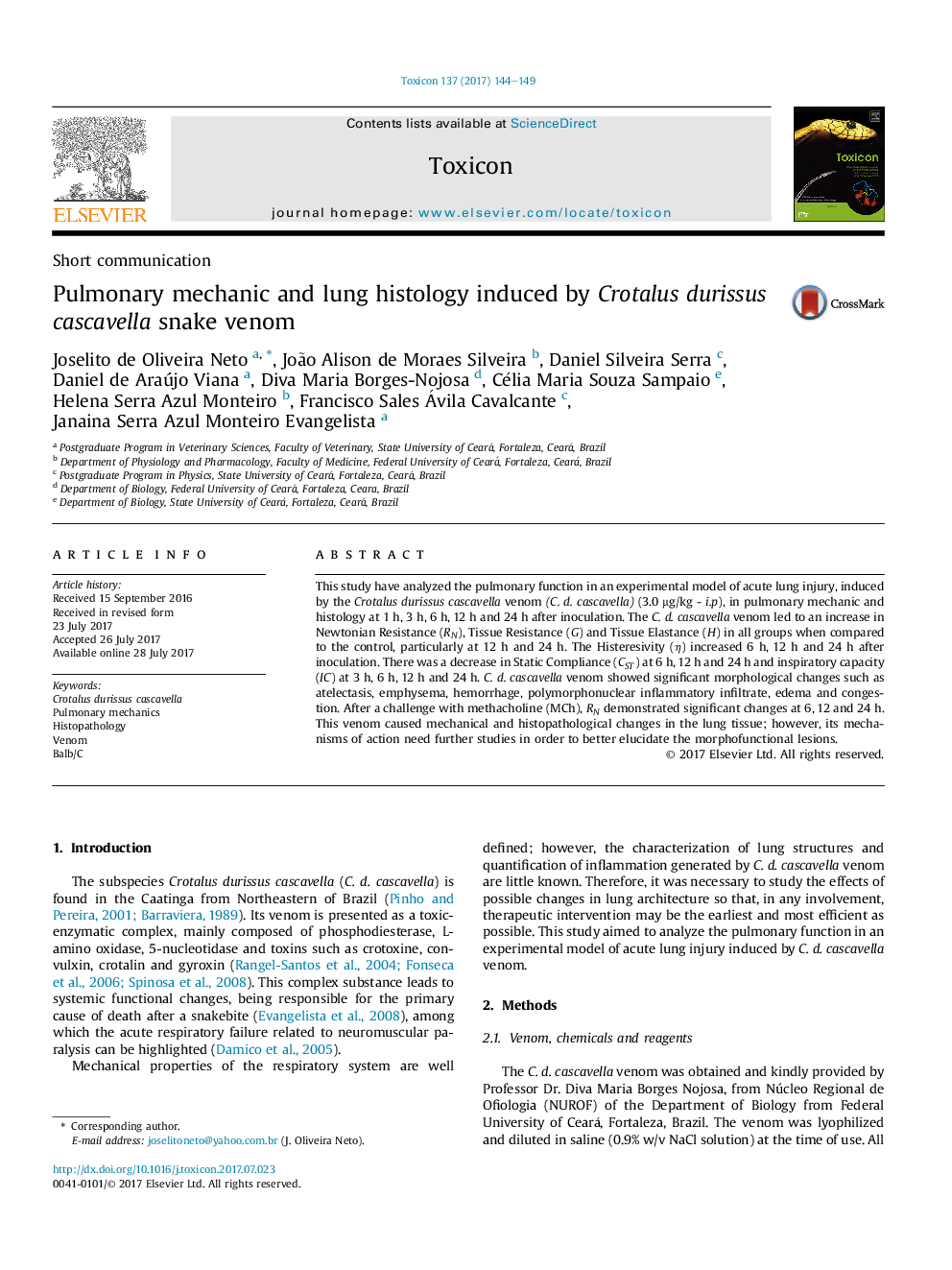| کد مقاله | کد نشریه | سال انتشار | مقاله انگلیسی | نسخه تمام متن |
|---|---|---|---|---|
| 5519296 | 1544099 | 2017 | 6 صفحه PDF | دانلود رایگان |
- C. d. cascavella venom increased Newtonian resistance, tissue resistance, tissue elastance and histeresivity in rat lungs.
- C. d. cascavella venom reduced static compliance and inspiratory capacity in rat lungs.
- C. d. cascavella venom induced morphological changes in the lung tissue.
This study have analyzed the pulmonary function in an experimental model of acute lung injury, induced by the Crotalus durissus cascavella venom (C. d. cascavella) (3.0 μg/kg - i.p), in pulmonary mechanic and histology at 1 h, 3 h, 6 h, 12 h and 24 h after inoculation. The C. d. cascavella venom led to an increase in Newtonian Resistance (RN), Tissue Resistance (G) and Tissue Elastance (H) in all groups when compared to the control, particularly at 12 h and 24 h. The Histeresivity (η) increased 6 h, 12 h and 24 h after inoculation. There was a decrease in Static Compliance (CST) at 6 h, 12 h and 24 h and inspiratory capacity (IC) at 3 h, 6 h, 12 h and 24 h. C. d. cascavella venom showed significant morphological changes such as atelectasis, emphysema, hemorrhage, polymorphonuclear inflammatory infiltrate, edema and congestion. After a challenge with methacholine (MCh), RN demonstrated significant changes at 6, 12 and 24 h. This venom caused mechanical and histopathological changes in the lung tissue; however, its mechanisms of action need further studies in order to better elucidate the morphofunctional lesions.
Journal: Toxicon - Volume 137, October 2017, Pages 144-149
